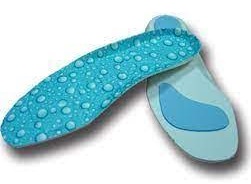Polyurethane shoe sole foam
About 17% of shoe industry products are dedicated to shoe polyurethane components, such as insoles, midsoles, and outer soles. In this article, we will review polyurethane shoe soles
How to produce polyurethane shoe soles
Polyurethane or PU (Polyurethane-PU) is usually produced from the polyaddition reaction of a polyol (polyester or polyether) including hydroxyl functional groups with isocyanate in different methods and ratios. Meanwhile, polyurethane foams have attracted a lot of attention, the cellular structure of polyurethane has a great effect on physical properties such as density, hardness, compression, resistance properties, flexibility and cushioning properties. One type of polyurethane foam that has wide applications in the shoe industry is polyurethane shoe sole foam. Polyurethane shoe sole foam is soft foam type.
As it is known, first the raw materials are mixed together and then they are poured into special sole molds so that the polymer reaction occurs and polyurethane shoe sole foam is produced. There may be two modes, one is the manual mode, in which all steps from the injection of raw materials into the mold to the removal of the formed foam are performed by the workers.
The second mode is a machine in which the molds move on the conveyor belt and the steps proceed automatically. After the foam is formed and removed from the mold, there may be excess material around and around the edges of the sole, this is not a problem, but it ensures that the part is 100% filled and allows air bubbles to escape. This additional material is called mold flash. In the last step, the flash of the mold is cut. Polyurethane shoe soles can be produced in different and even mixed colors.
Advantages of polyurethane shoe soles
In general, shoe soles are used to improve the performance of shoes and create a sense of comfort. The unique advantages of polyurethane shoe sole foam make it a suitable option for use as the sole of all types of shoes. Some of the benefits are as follows:
The sole made of polyurethane material has good softness and elasticity.
It will not deform easily.
More comfort and support for the arch of the foot
Odor and humidity control
Shock absorption that provides excellent abrasion resistance.
Chemical resistance
Provide a high level of breathability
Washable
Due to special formulations, it can be anti-electricity (ESD).
antibacterial
Polyurethane shoe insole foam can even be produced with recycled materials, so it is an environmentally friendly option.
Applications of polyurethane shoe soles
Polyurethane shoe sole foam can be used to make all kinds of molded, comfortable and even medical insoles.
Polyurethane shoe soles are very useful for those who follow a very active lifestyle and engage in various sports. In fact, the more active you are, the more capable your legs must be of handling external shocks, meaning they must be able to absorb shocks faster than the average person. The same issue may cause multiple injuries to your feet, including damage to ligaments, tendons, and joints, knee injuries, and even back injuries.
Therefore, it is important for these people to have very resistant shoe soles that can withstand the pressure of this activity. Polyurethane shoe soles absorb the shocks of high activity and in return use the energy from the shock to improve performance and also reduce the risk of injury, which is why polyurethane shoe soles are ideal for sports. Moreover, the durability and stability of the polyurethane sole make it an ideal option for a very active person.
The very high resistance and comfort of polyurethane shoe sole foam makes it possible to use it as the sole of safety shoes, which protects the foot well against external blows.
In addition to the mentioned cases, polyurethane shoe sole foam can be used for other types of shoes, including leather shoes, boots, winter shoes, sandals, shoes with flat, short and high heels, etc.


